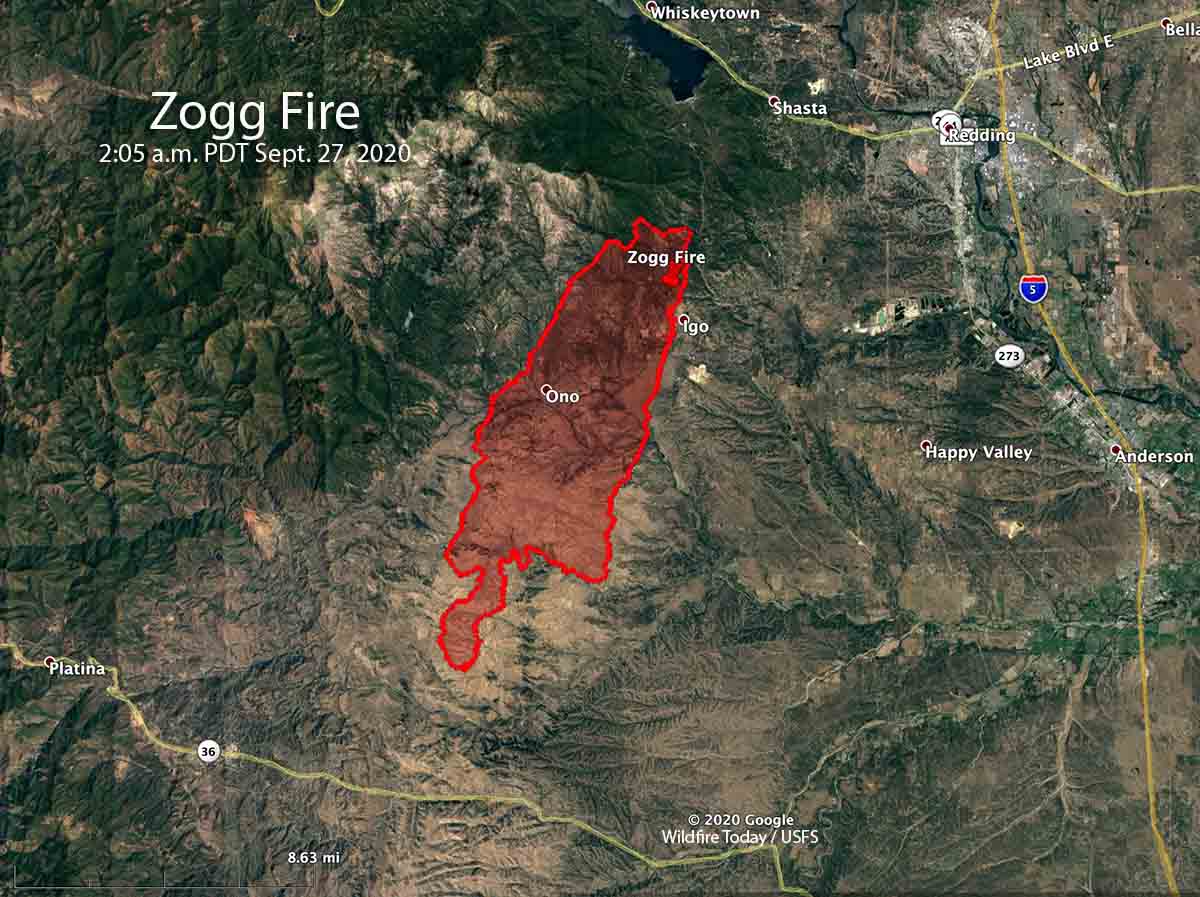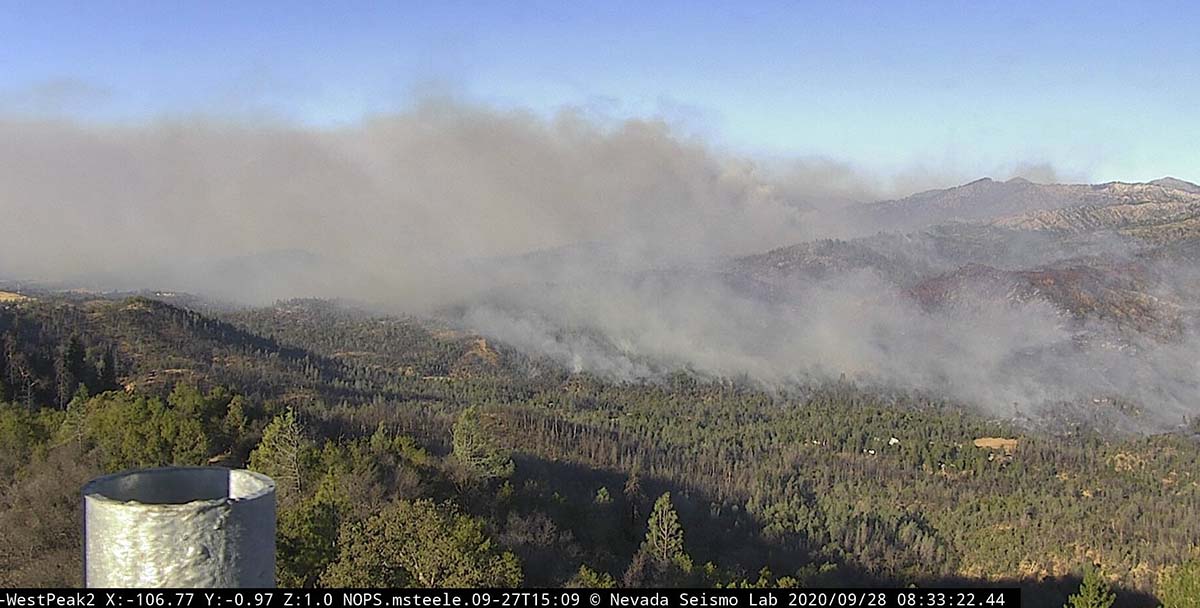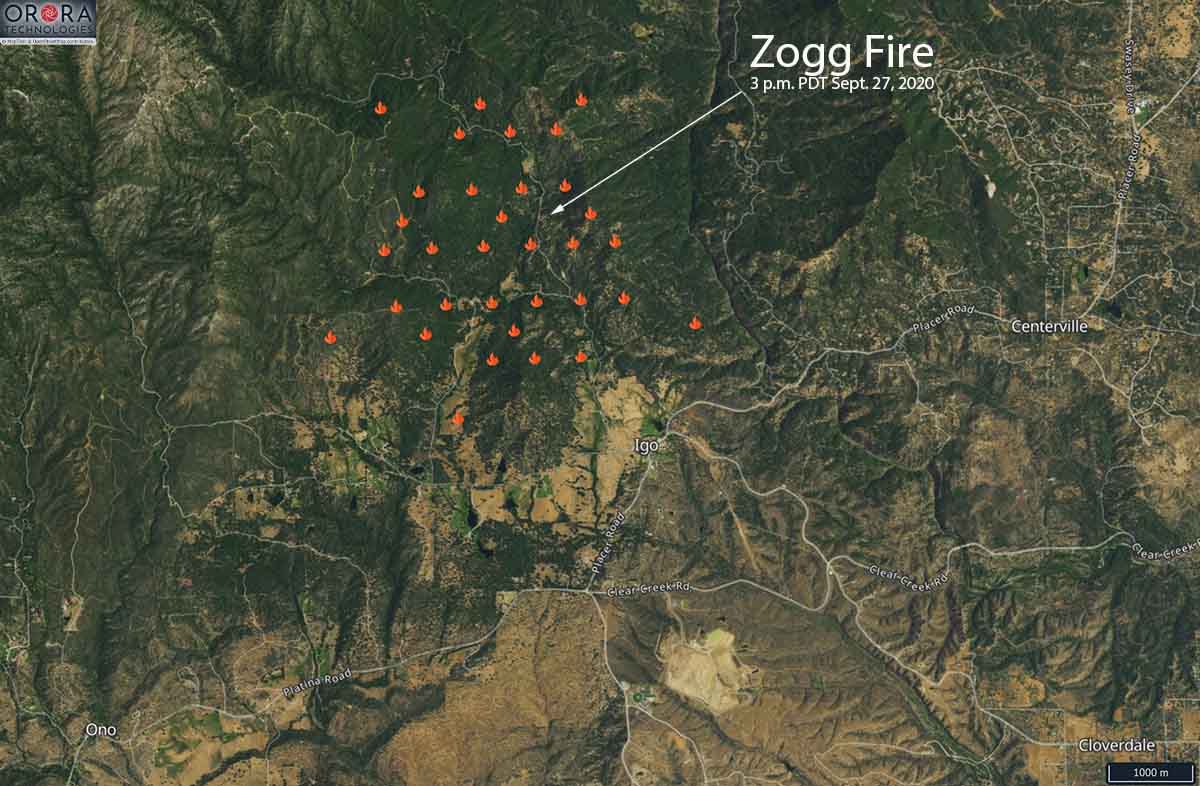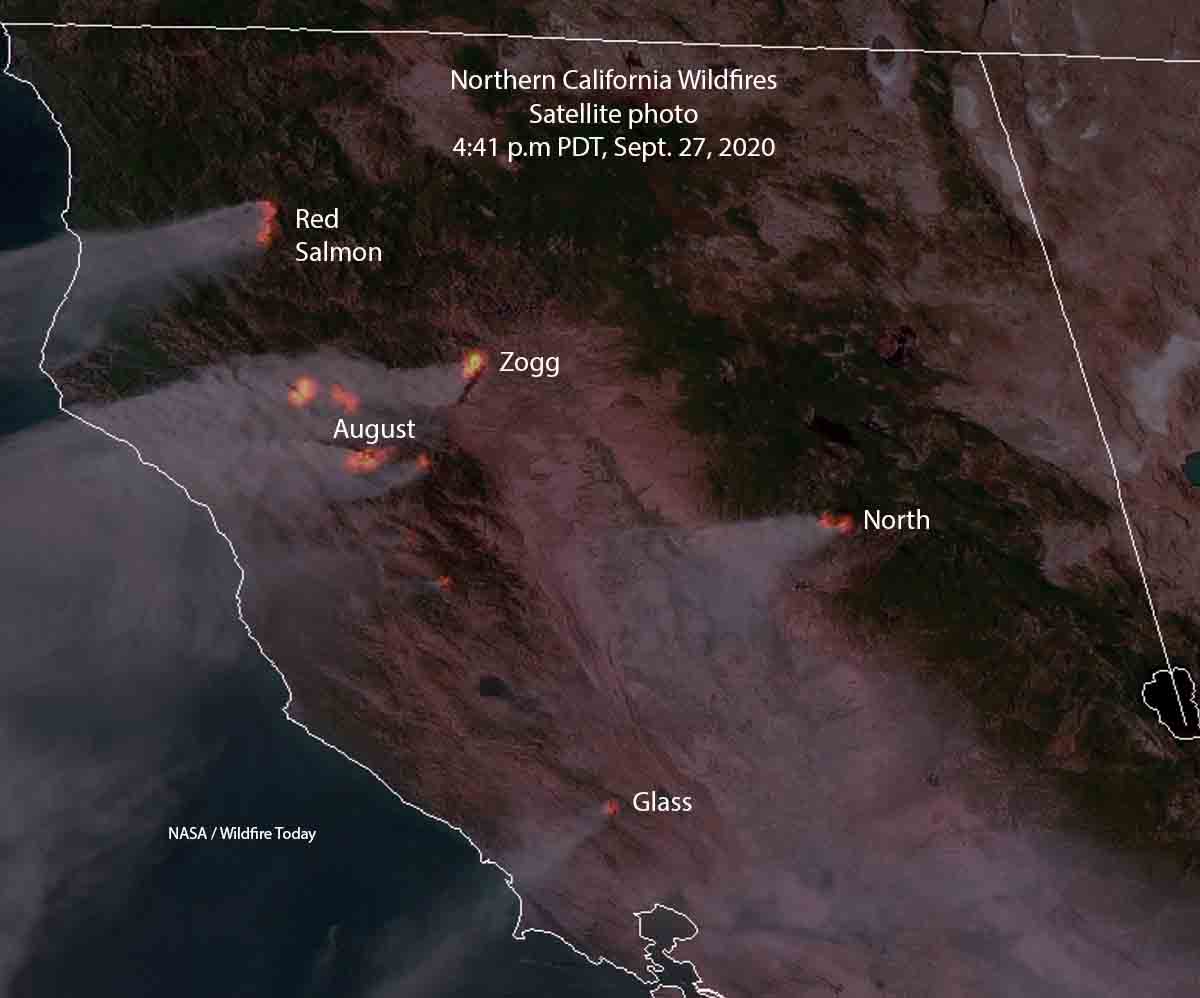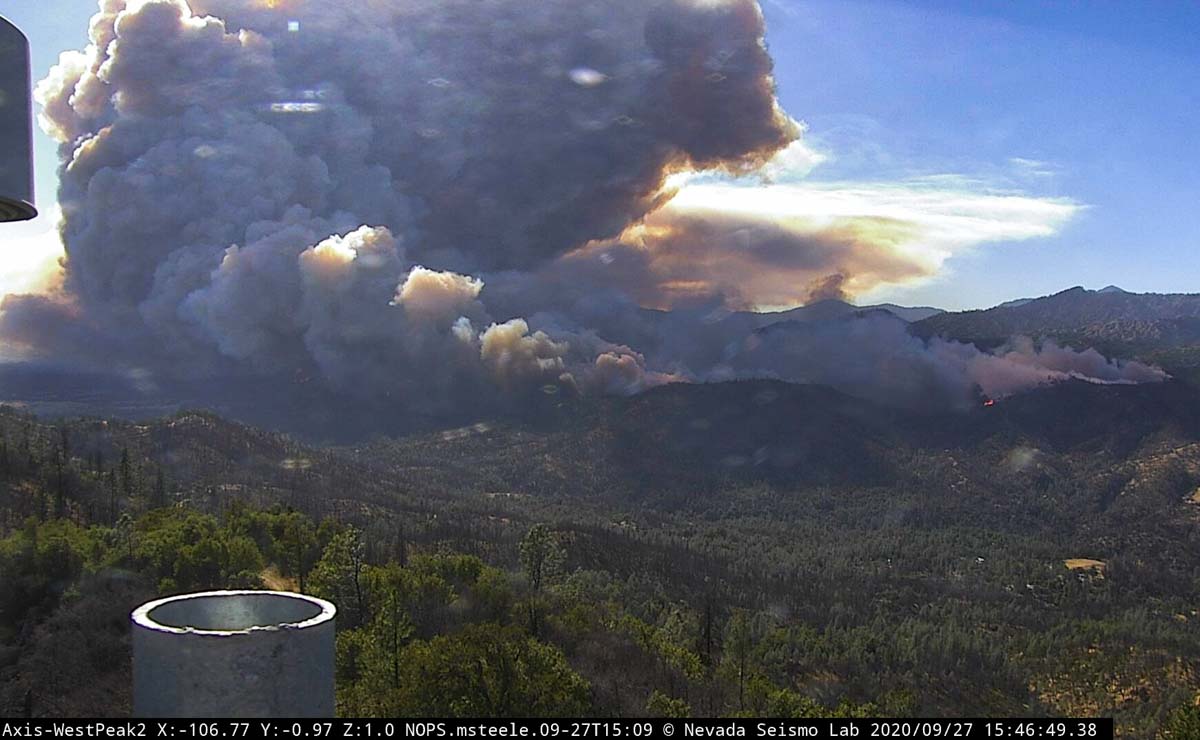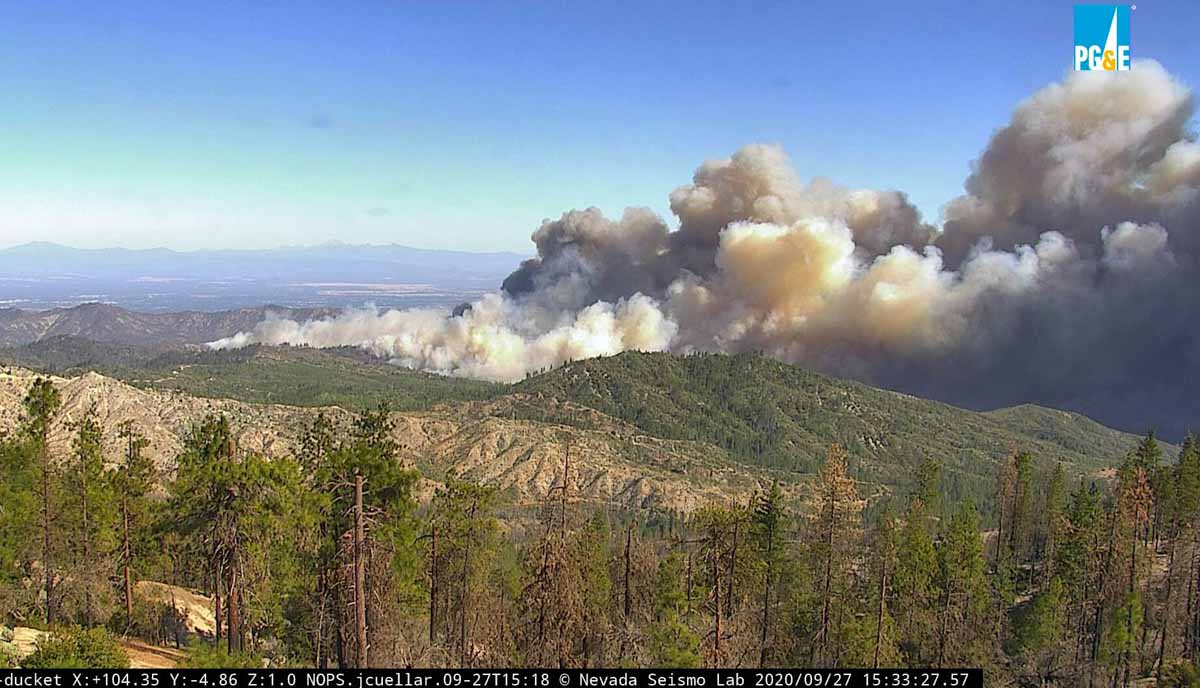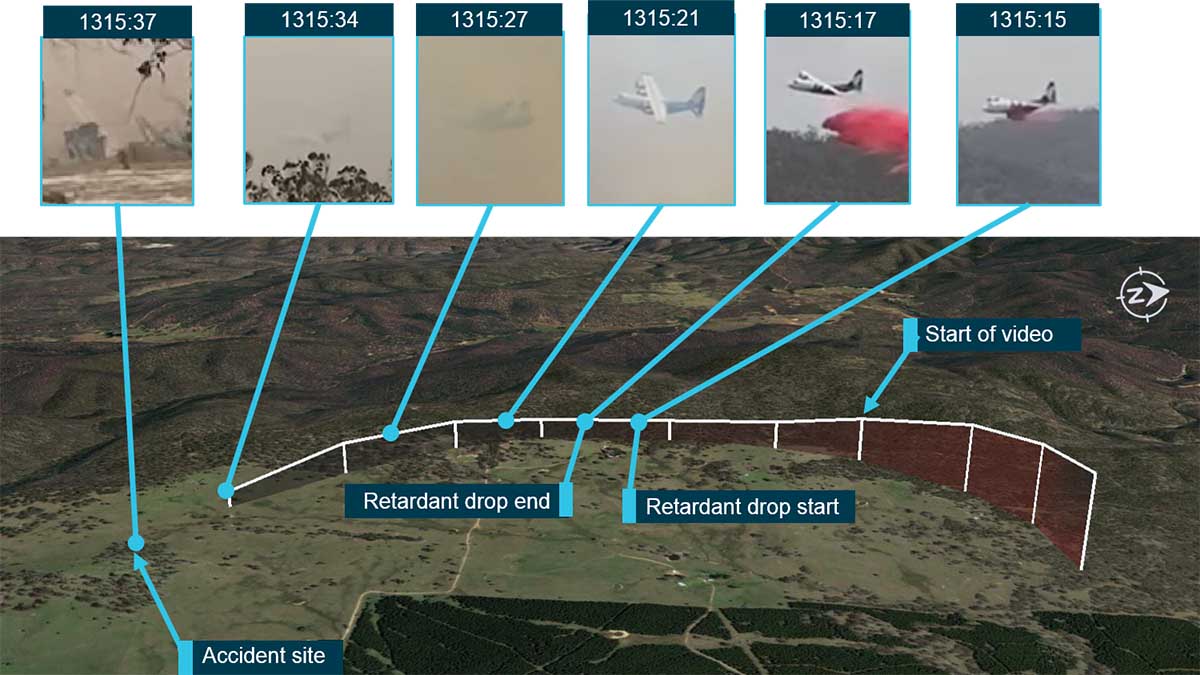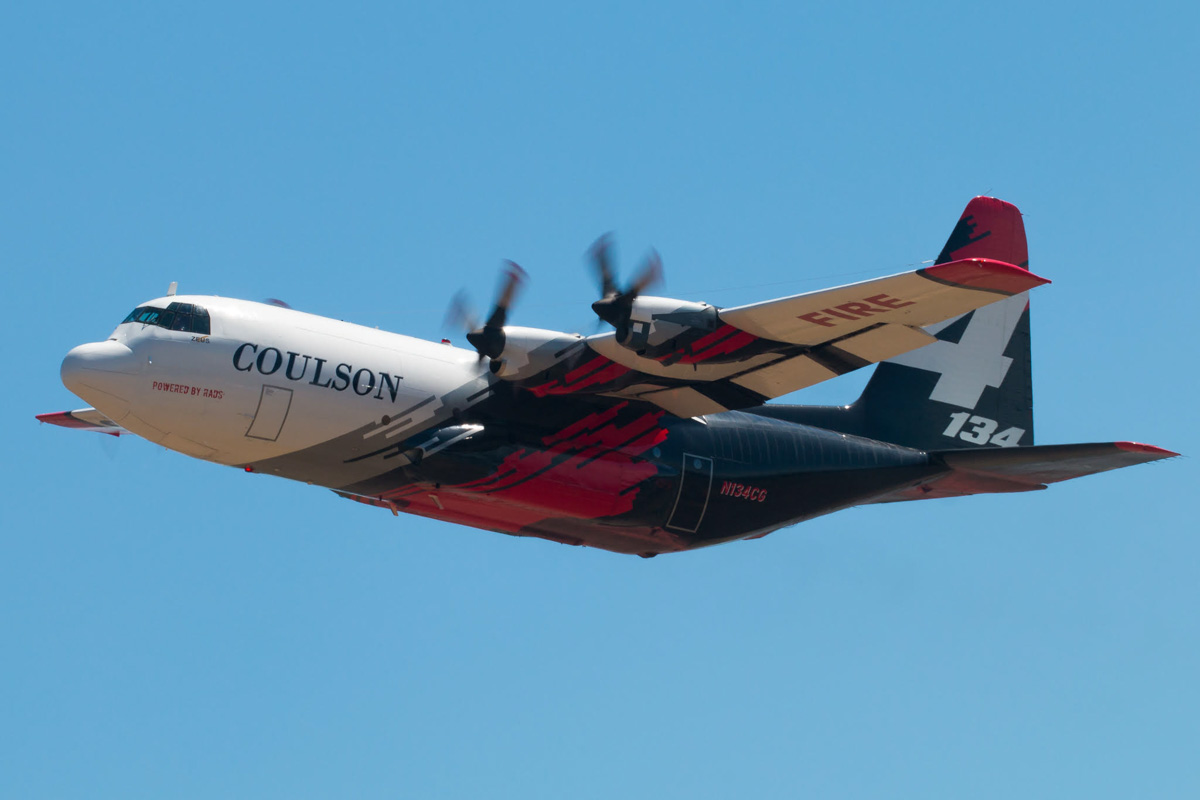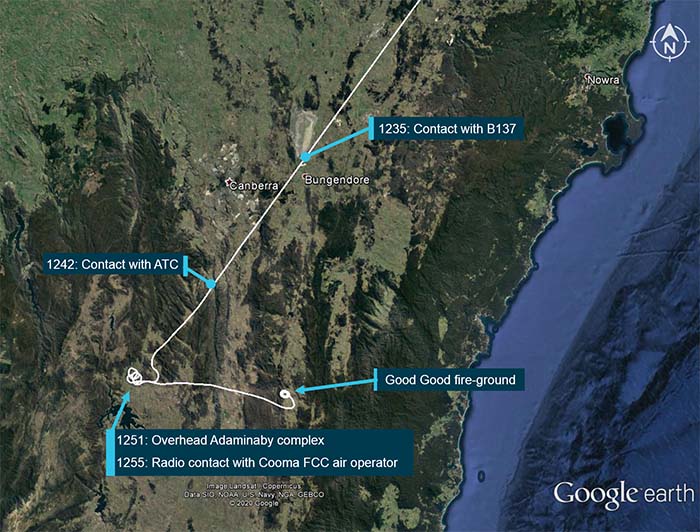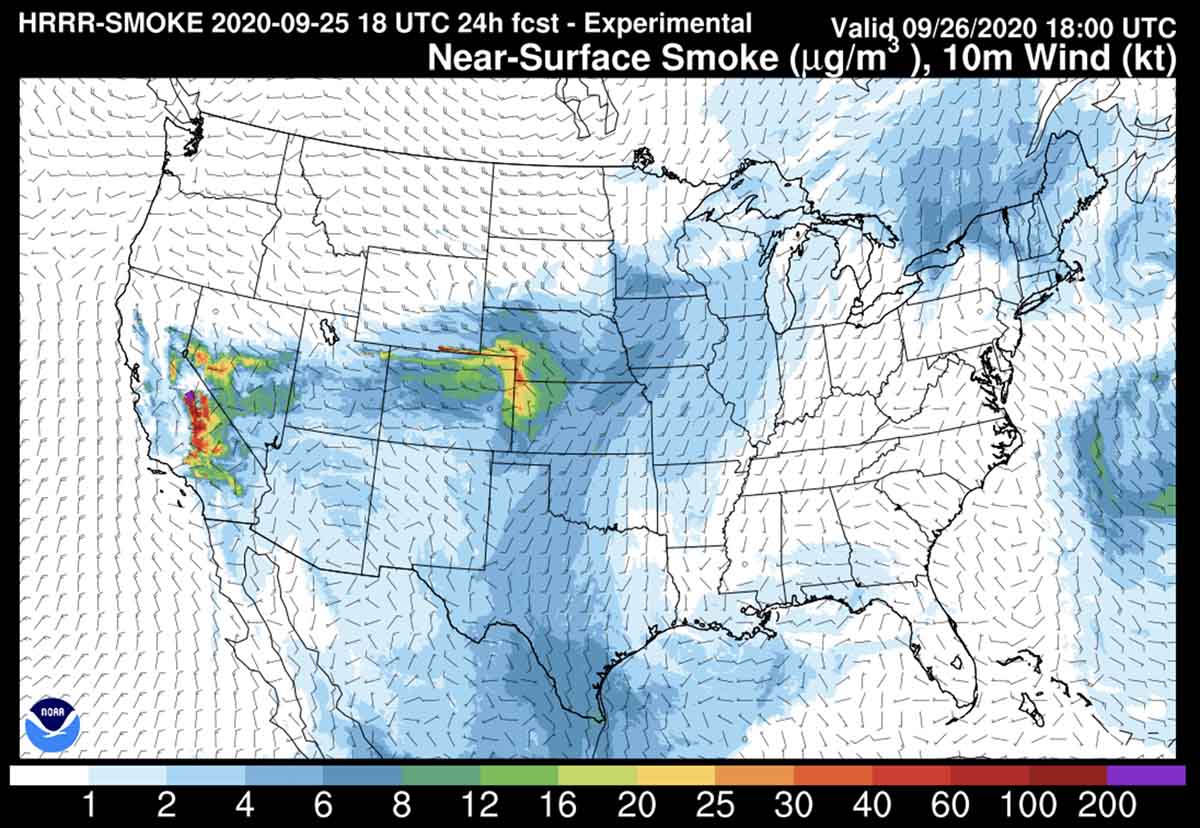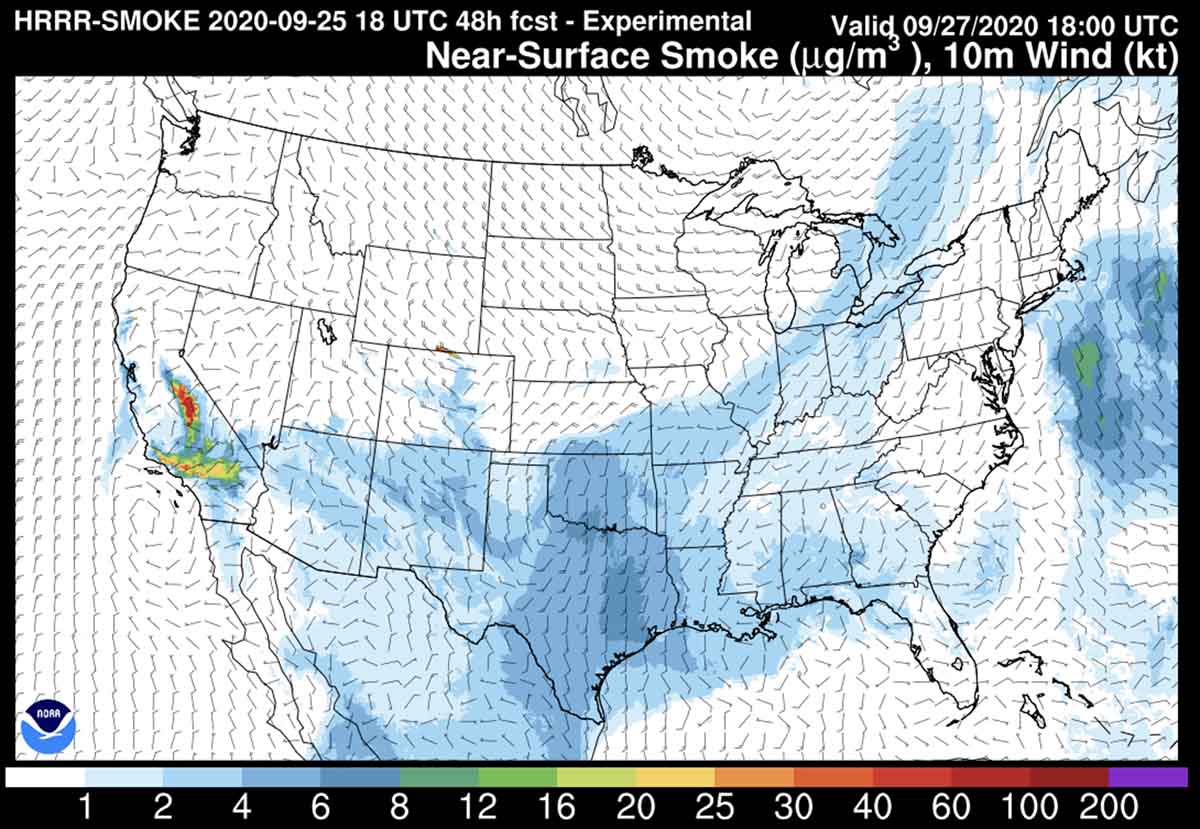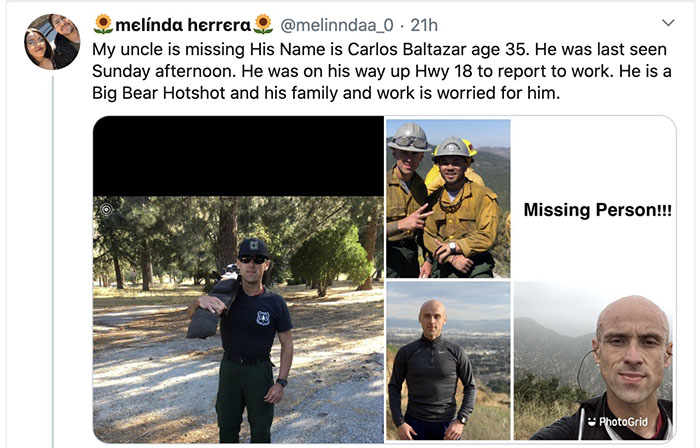Updated September 29, 2020 | 4:57 a.m. PDT
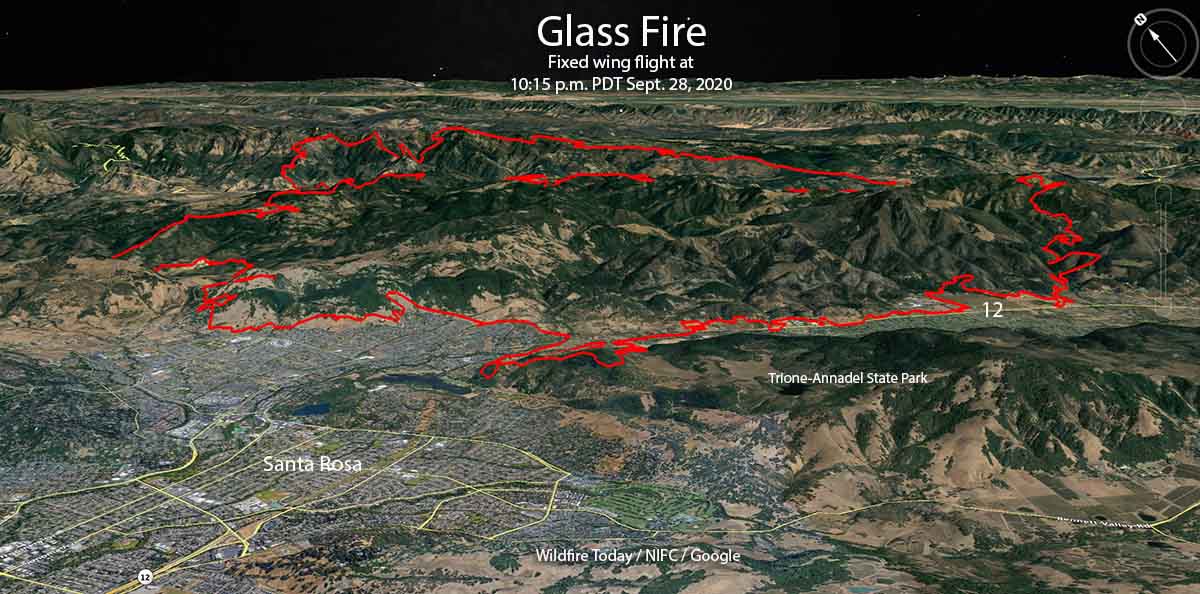
On Monday the Glass Fire at Santa Rosa, California grew in all directions, even as the strong winds that initially spread the fire slowed. But the high temperature and the low relative humidity combined with low moisture in the vegetation combined to enable significant fire growth.
To see all articles on Wildfire Today about the Glass Fire, including the most recent, click here.
At 7:52 p.m. on Monday CAL FIRE reported the fire had burned 36,236 acres. The information from a 10:15 p.m. mapping flight will probably result in another 11,000 acres being added to the total.
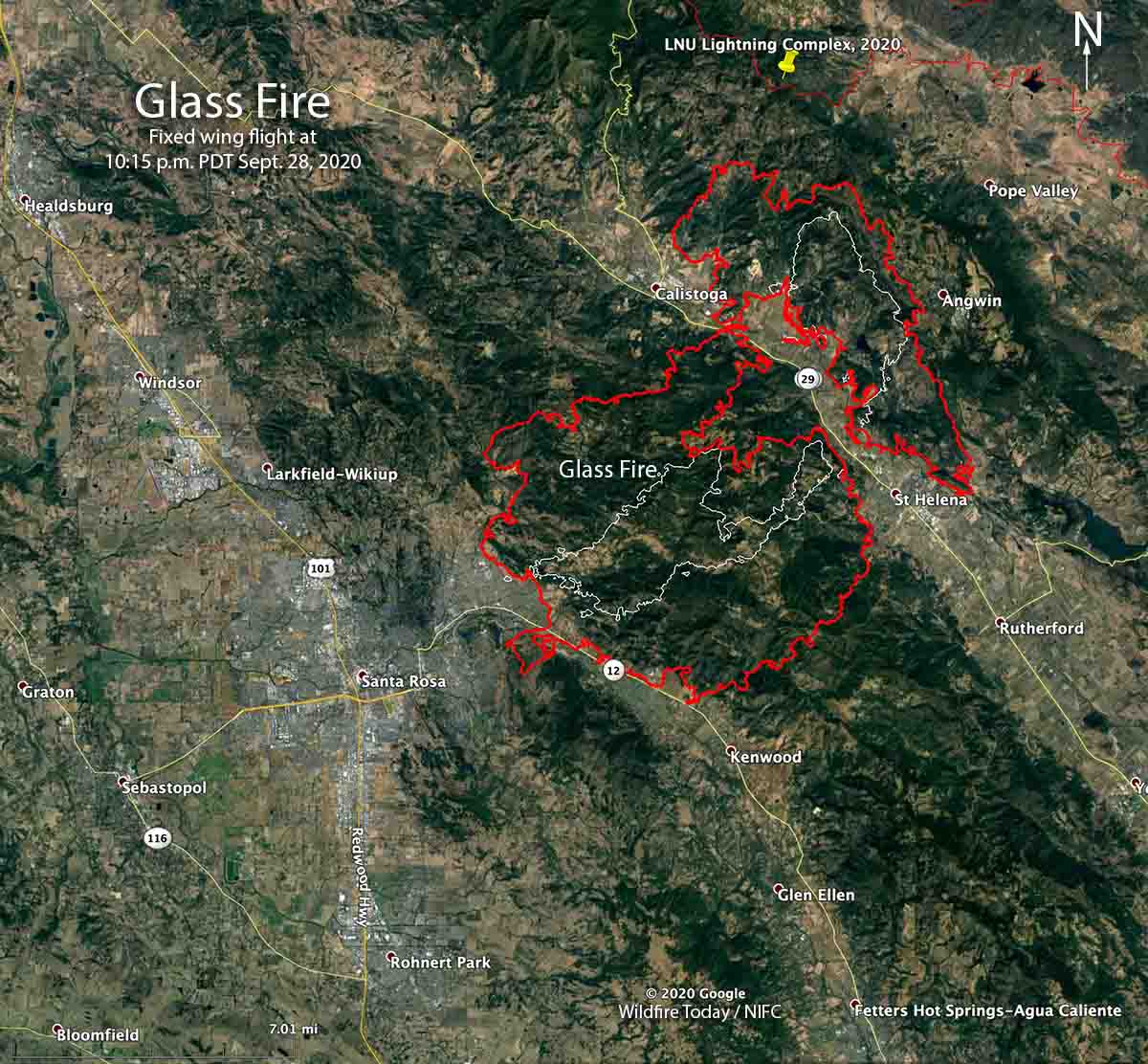
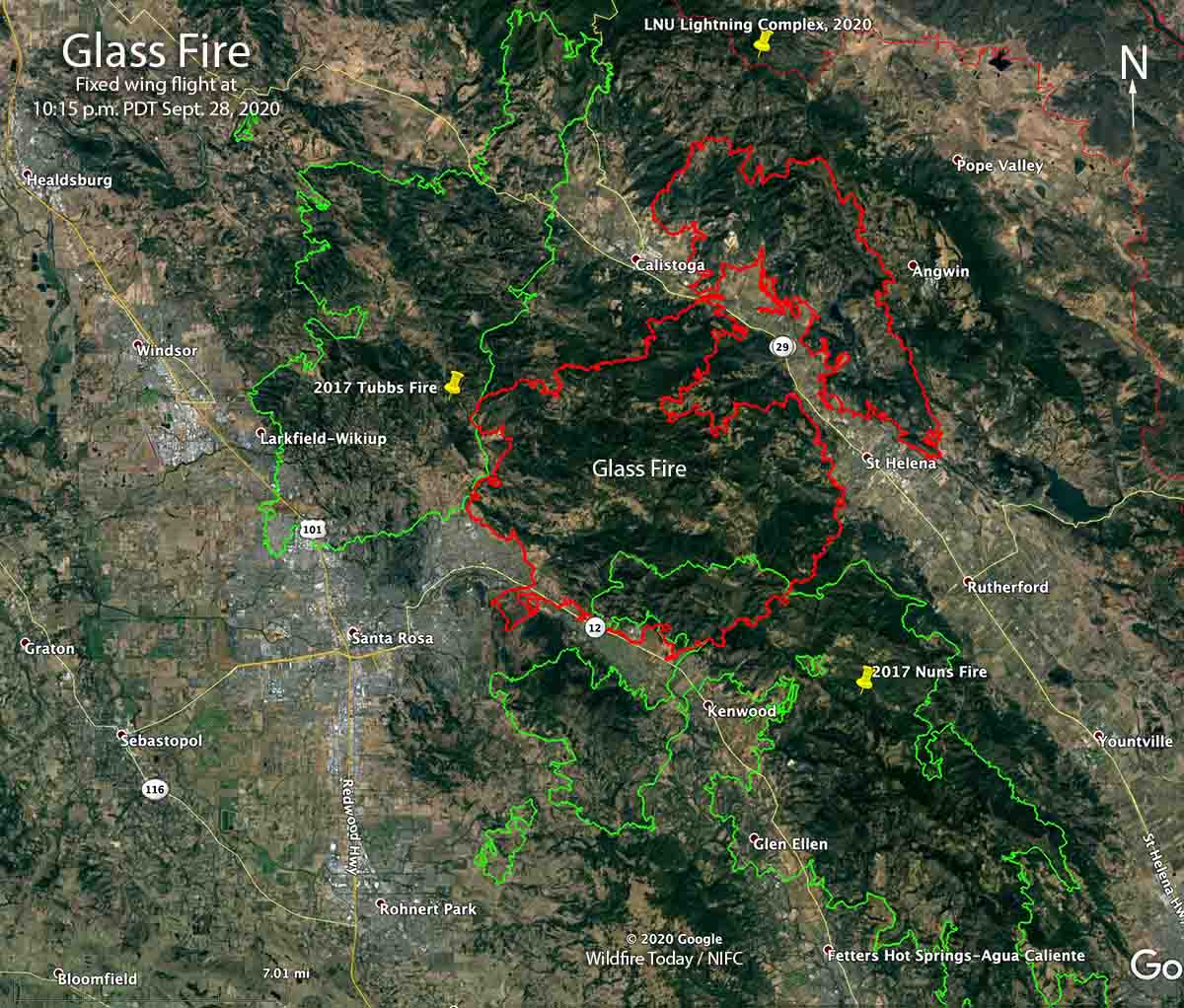
Resources assigned to the Glass Fire include 26 hand crews, 80 fire engines, and 3 helicopters for a total of 1,466 personnel.
Updated September 28, 2020 | 5:22 p.m. PDT
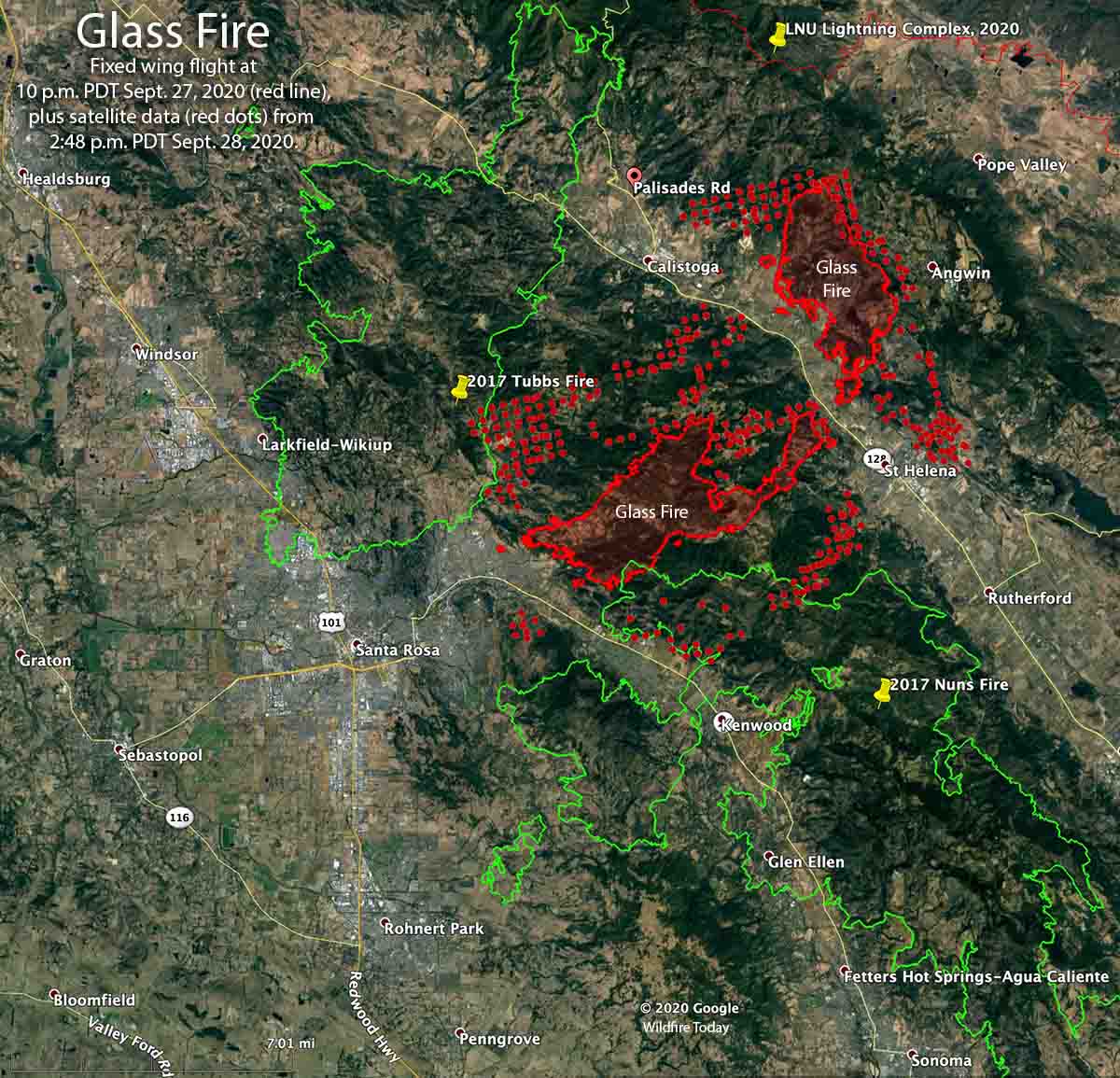
We have an updated map of the Glass Fire in the North Bay area, above, but it should be taken with a grain of salt. The red line was the perimeter mapped by a fixed wing aircraft at 10 p.m. PDT Sept. 27, 2020. The red dots represent heat detected by a satellite 512 miles overhead at 2:48 p.m. PDT Sept. 28, 2020. The red dots could be extreme heat in the smoke column, or fire on the ground. The fire is burning so intensely that debris and burning embers in the smoke have their own heat signature, confusing the sensor on the satellite. But, we have much more confidence in the mapping from the fixed wing aircraft.
Hopefully we will get another fixed wing map Monday night.
Updated September 28, 2020 | 2:16 p.m. PDT
Note: the map below is not current, but it is the only one we have available based on actual observations, in this case, from a fixed wing mapping aircraft at 10 p.m. PDT September 27, 2020. At that time the fire had burned 11,000 acres.
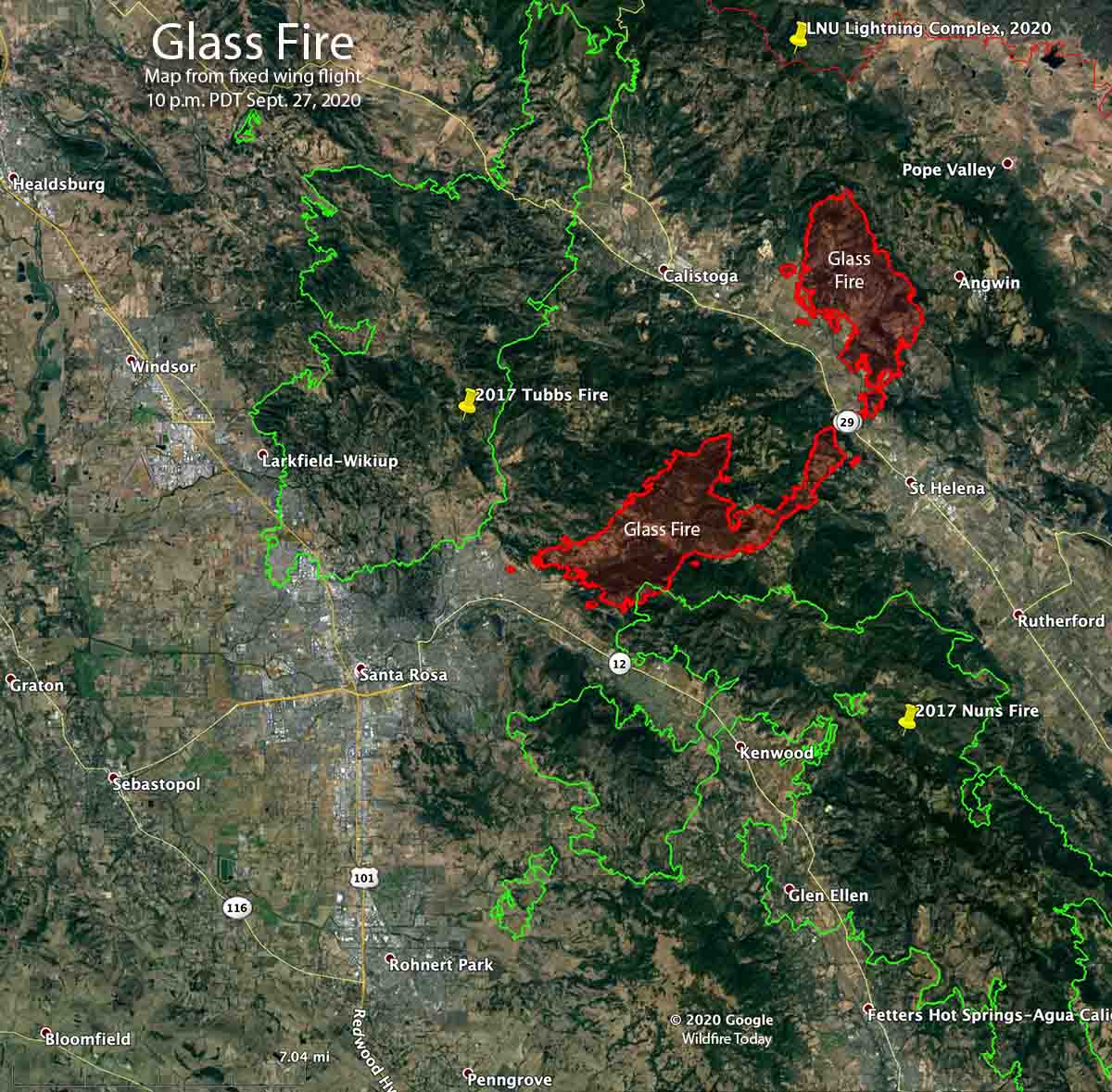
The other maps, below, are derived from sensors on satellites orbiting hundreds of miles above the Earth and can show heat from fire on the ground as well as areas of the smoke column with very intense heat.
We know the Glass Fire has spread beyond the red lines on the map above. It is well established east of Santa Rosa and south of Highway 12 in the Trione-Annadel State Park.
Structures at several wineries have burned and others are threatened.
#meadowood across the valley from St Helena. I just left there…they couldn’t save it. :(. #glassfire pic.twitter.com/rFVCbGrndD
— Adam Housley (@adamhousley) September 28, 2020
September 28, 2020 | 7:30 a.m. PDT
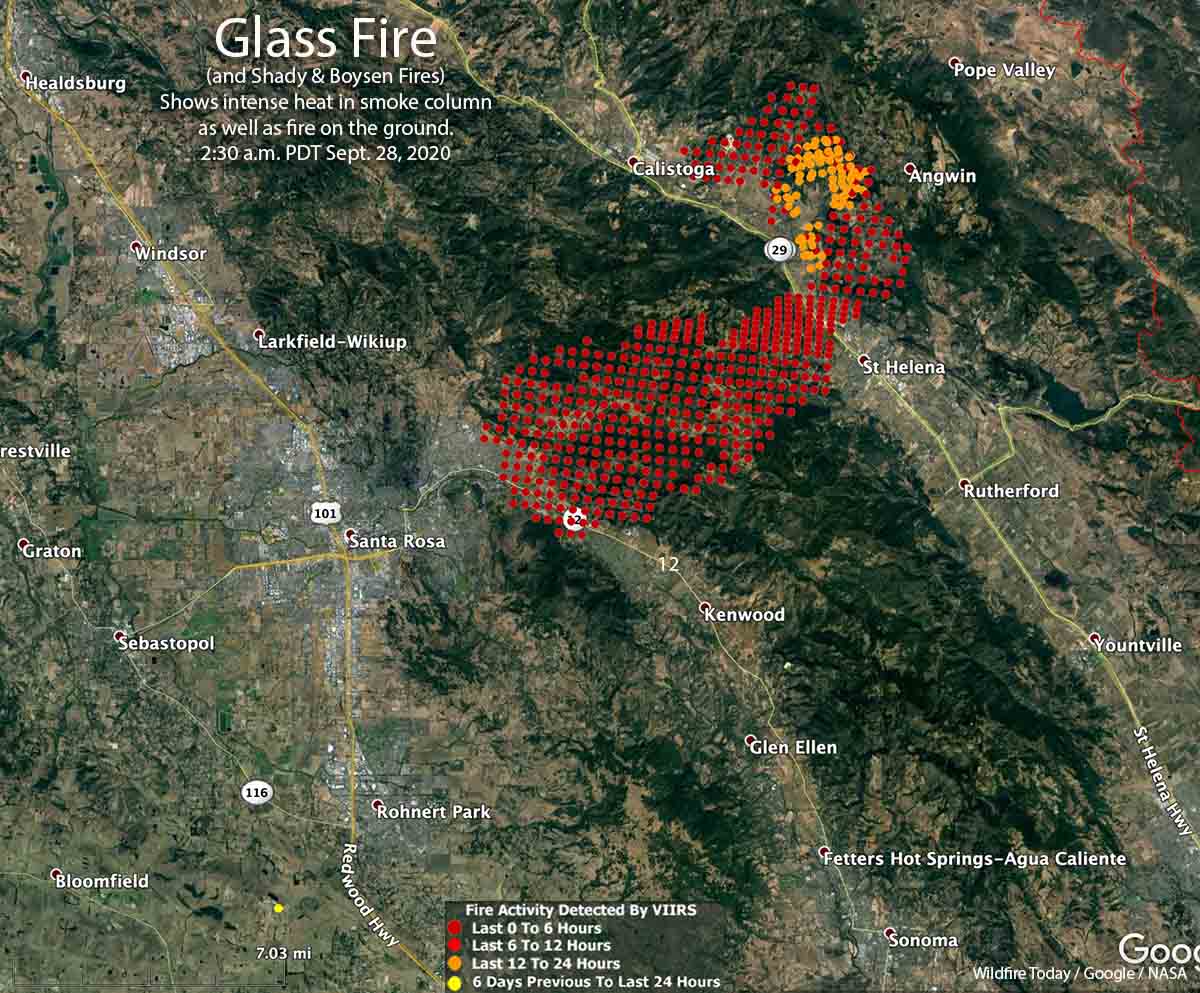
Strong northeast winds have caused at least two wildfires to burn together, the Glass Fire and Shady Fire. The merged fires then spread rapidly from the Calistoga and St. Helena areas of California’s North Bay, southwest into the eastern side of Santa Rosa. At 6:15 a.m. CAL FIRE reported the blaze had burned 11,000 acres.
At about 5 a.m. what we will call the Glass Fire reached the Skyhawk community on the east side of Santa Rosa north of Highway 12, and by 6 a.m. firefighters were battling it near the intersection of the highway and Oakmont Drive.
The Glass Fire started north of St Helena on the east side of Highway 29. As the northeast winds increased, a fire occurred west of the highway. It was named Shady Fire, but may have been a spot fire from the Glass Fire. The two fires burned together and continued moving southwest toward Santa Rosa.
The fire has burned numerous structures and many more are threatened. This very dangerous fire is moving faster than authorities can make evacuation notifications. If you feel threatened do not wait for official notification.
Mandatory evacuations are in effect. For information:
- CAL FIRE LNU (Sonoma, Lake, Napa counties)
- Santa Rosa Police
- City of Santa Rosa
The fire is being driven by strong, dry winds and fuels that have built up in an area that has not seen fire in many decades. Weather stations overnight recorded humidity in the low teens and wind gusts up to 30 mph near Santa Rosa. Winds are expected to decrease through the day on Monday, but the high temperature will be 99 with the relative humidity in the teens. A Red Flag Warning and a Heat Advisory are both in effect.
Continue reading “Glass Fire destroys structures in California’s North Bay”

